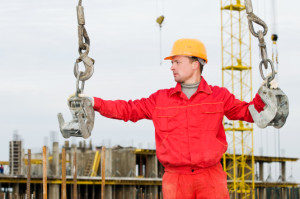ABI10110 – ABIOSH Certificate in Rigging and Slinging (BRIGS) ©
Certificate In Basic Safe Rigging and Slinging Practices (BRIGS) Overview
The certificate in basic safe rigging and slinging practices (BRIGS) is theoretical and practical Rigging & Slinging training is specifically developed for the operational staff (Riggers & Banksman) working on cranes or on board of crane ships and oil & gas platforms. It is based on the Awarding body for occupational health and safety (ABIOSH) UK syllabus and is to teach the basic skill requirements, practical applications and associated job safety knowledge to personnel involved in slinging, lifting and signaling operations. All aspects of Rigging, Slinging and Mooring are covered. At the end of the course successful delegates should be able to identify, select, inspect and use slings and lifting tackle both safely and efficiently
The aim of the training is to provide the participants with the tools and knowledge that will increase both the safety and the efficiency of their work on board cranes. During the course participants will learn to a basic level of competence safe rigging and slinging various types of loads and safe working practices when working with wire ropes, slings and lifting appliances and routine inspection and maintenance of lifting appliances.
This course is designed to help participants understand:
- International health and safety regulations
- Inspection definition
- Marking of lifting equipment
- Safe use of wire ropes
- Safe use of chain slings
- Sling loads and angles
- Safe use of fabric slings
- Safe use of shackles and eyebolts
- Establishing load weight and centre of gravity
- Correct crane signals
- Local management instructions covering rigging and slinging
- Have sufficient knowledge to be a Responsible Person when using Lifting Equipment
Course Content
This training consists of a combination of theoretical instruction, practical exercises in classroom and practical training with overhead cranes and other equipment.
PART 1: THEORY
I. Health and Safety Legislation
- Rigger’s and company’s Responsibilities
- Wire rope, its construction and Safe Working Load (SWL)
- Maintenance, Inspection and parameters for safe use of all lifting appliances
- Accidents caused during Lifting
- Company Procedures and Legislations
II. Materials and Equipment
- Fibre Ropes
- Fibre Slings
- Wire Ropes
- Slings and Shackles
- Chain Hoists
- Bulldog Grips / Blocks / Plate Clamps
- Fall Arrest Devices / Winches / Wire Rope Sockets
- Correct use and Limitation of Wire Ropes / Slings and Lifting Appliances
- House Keeping and Maintenance
- Lifting Beams and Spreader Bars
- Sheave Blocks, ROV Equipment
- Selecting the safest and most efficient materials and equipment
- Latest developments
- Recognizing unsafe materials and equipment
III. Crane Operations
- Hoisting of Personnel
- Anchor Handling
- Rules and Regulations
- Basic Load Calculations
- Certificate Inspection and Marking
- Safe Use of Materials
- Wire Rope Tolerances – Design Tolerances
- Correct use of wire rope slings, synthetic, webbing slings, chain slings, shackles, eyebolts and hooks
- Estimating the size of sling required to carry out the work safely and efficiently
- Wire Rope Sling Capacity Chart
- How to use the slings to increase their lifting capacity
- Prevention of damage to the slings during lifts
- Recommended procedures for maintenance and storage of all lifting equipment
- Basic principles of hand chain blocks, tirfors, pull lift and hoist
- Pre-use inspection parameters
- Maintenance and storage recommendation
- How to use lifting machines to gain the best mechanical advantage
- Communication and Hand Signals during Lifting
- Practical Exercises involving Planning and Lifting of Various Shapes
Two Hours Exams
PART 2: ONSITE PRACTICAL
- Application of health and safety in operations
- Using a crane
- Demonstrations of various methods of slinging to enable lifts to be carried out safely
- Practical demonstration of inspection of lifting equipment
- Practical demonstration with course participants using the correct crane signals
- Practical demonstration of safely applying and using a tag line(s) in a safe manner to control the load
- Wire Rope Tolerances – Design Tolerances
Practical Examination
DURATION - 5 days in total
(4 Days theory + Exam; 1 Day onsite practical at client’s site)
CERTIFICATE
Participants who pass the exam will receive a certificate as appropriate







